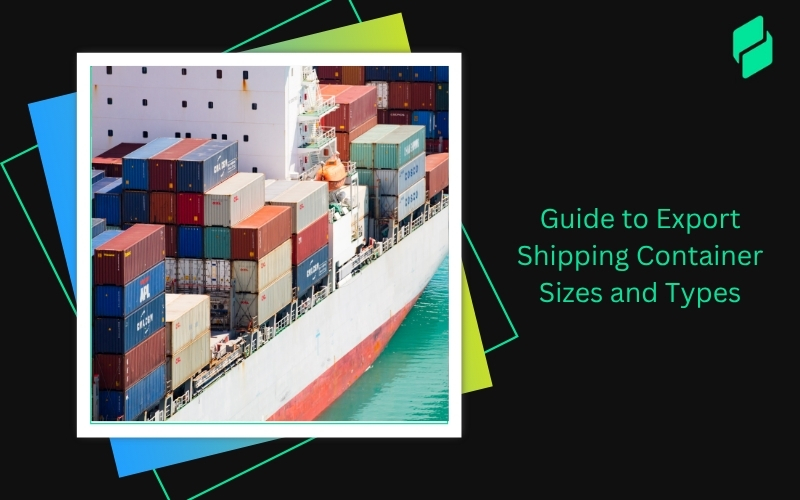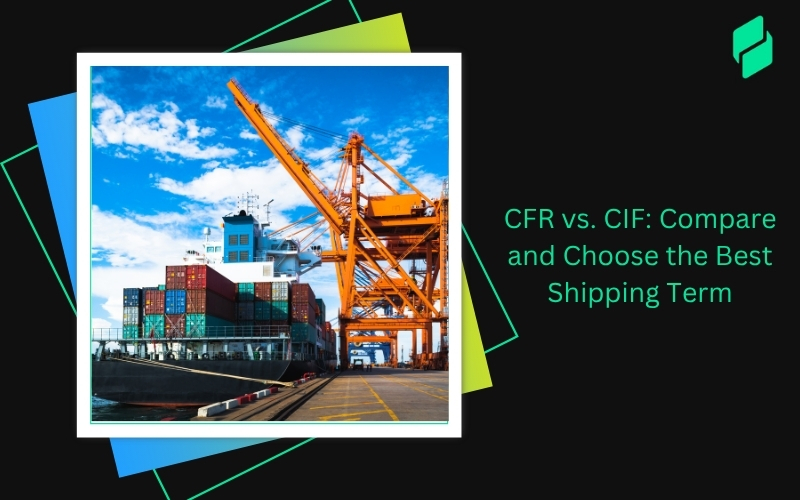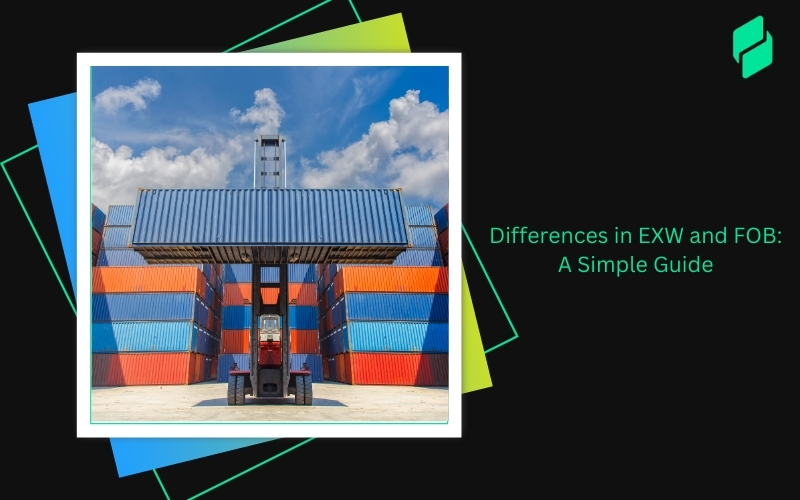Optimize your business: use unlimited savings with Pazago fulfilled now!
Get Started ->"With great power comes great responsibility." This famous line from Spider-Man applies to more than just superheroes—especially when it comes to international trade.
Handling goods and ensuring compliance is no small feat in the world of exports. When we talk about routed export transactions, the responsibility shifts, but the need for careful management remains the same.
A routed export transaction is one in which the foreign buyer (FPPI) controls key elements in the shipping process. This unique situation requires precise communication and proper documentation to avoid hiccups. So, if you're wondering how to manage such transactions, you're in the right place.
Let’s break it down in a way that’s easy to follow and leaves no room for confusion!
What Is a Routed Export Transaction?

In this setup, the buyer outside the exporting country authorises a local agent, such as a freight forwarder, to manage key aspects of the export, including filing necessary documentation with customs authorities.
Unlike a standard export transaction, where the seller manages the entire process, a routed export transaction gives more control to the buyer. The buyer makes decisions about shipping, compliance, and documentation.
In short, the foreign buyer is in the driver's seat, handling the legal and logistical aspects of getting the goods across borders. The seller still plays a role but mainly focuses on providing the information needed for export and ensuring the goods are ready for shipment.
Also Read: Affordable Export Documentation Services for All Trade Needs
How FPPI Authorises an Agent

In a routed export transaction, the FPPI must authorise an agent in the U.S. to handle the export. The agent takes on important responsibilities like filing the Electronic Export Information (EEI). This is done through a power of attorney or written authorization from the FPPI, ensuring the process is legal and compliant with U.S. laws.
Now, let's discuss the role of the U.S. authorised agent. The primary role is to assist in the export process. This includes ensuring compliance with regulations and that all necessary export documentation is in order.
Also Read: What Is Shippers Letter Of Instruction?
Key Components of a Routed Export Transaction
Understanding the major components of routed export transactions is important. These components make up the foundation of this process. Helping to get them right ensures compliance and a smooth export process.
Here’s a breakdown of the essential elements:
Roles and Responsibilities in Routed Export Transactions

Each party involved in a routed export transaction has clearly defined roles and responsibilities. Here’s what you need to know:
- FPPI Responsibilities
FPPI (Foreign Principal Party in Interest) refers to the foreign buyer in a routed export transaction. They control the shipment and appoint an agent to handle the export process.
- Authorizing a U.S. Agent Through a Power of Attorney
The FPPI gives a U.S. agent the legal authority to handle all export-related tasks. This usually occurs by a power of attorney, a document granting the agent the right to act on their behalf.
- Providing Accurate Information for Filing EEI
The FPPI must ensure that the U.S. agent has the correct details about the shipment, such as the description of goods, their value, and other required data. This information is essential for filing the Electronic Export Information (EEI) with customs.
- Ensuring Legal Export Under U.S. Laws
It is the FPPI's responsibility to ensure that all the necessary export regulations are followed. This includes ensuring that restricted goods are not shipped without the proper licenses.
- USPPI Responsibilities
USPPI (U.S. Principal Party in Interest) is the seller or exporter. They supply the goods and provide essential data for export.
- Supplying Necessary Data Elements to the FPPI or Authorised Agent
The USPPI must provide essential shipment details like the goods' description, quantity, value, and destination. This information is needed to file the EEI and complete the export process.
- Retaining Copies of All Export Documentation for Record-Keeping
The USPPI is required to keep copies of all the relevant export documents, such as invoices and shipping papers, for at least five years. This is important for audit and compliance purposes.
Requesting the Filed Data From the FPPI or Agent
The USPPI may ask for the Internal Transaction Number (ITN) or exemption code from the FPPI or agent. This number confirms that the export has been filed correctly with customs.
- Authorised Agent Responsibilities
The FPPI chooses the authorised agent to handle the export on their behalf. This agent is usually a freight forwarder or logistics company.
- Ensuring They Have Proper Authorisation from the FPPI
Before proceeding with the export, the agent must ensure they have legal authorization, such as a power of attorney, from the FPPI. This gives them the right to act on behalf of the buyer in managing the shipment.
- Filing the EEI with the Correct Data
The agent is responsible for submitting the EEI to customs. This document includes crucial details about the shipment and ensures that the export is legal and compliant.
- Providing the ITN or Exemption Code Back to the USPPI
After filing the EEI, the agent must give the ITN or exemption code to the USPPI. This number verifies that the shipment has been properly recorded with customs.
- Retaining Documentation for Compliance Purposes
The agent must keep all export-related documents for future reference. This includes copies of the EEI filing and any communications with customs in case of audits or compliance checks.
Also Read: Top 10 Shipping Agent Services In Mumbai
Risks and Challenges in Routed Export Transactions

So, here's the tricky part: a routed export transaction has its own risks and challenges. These issues often arise when roles and responsibilities are not clearly outlined or there’s a communication breakdown.
Here are some of the most common challenges:
- Incorrect Filing of Electronic Export Information (EEI)
One of the biggest risks is the potential for errors in filing the EEI. Inaccurate filing can lead to delays, fines, or even the seizure of goods by customs authorities.
- Reduced Control Over Compliance
In a routed export transaction, the FPPI takes on the responsibility of export compliance, leaving the USPPI with less control. Any errors or non-compliance can result in penalties for both parties, even though the USPPI has limited involvement in the filing process.
- Loss of Choice in Freight Forwarders
Since the FPPI selects the freight forwarder or authorised agent, the USPPI has little to no control over who handles the shipment. If the forwarder chosen by the FPPI is not reliable or experienced, this can impact service quality.
- Uncertainty Over Shipment Status
Because the FPPI and their agent manage the shipment, the USPPI may not always be informed about its status. This lack of transparency can create uncertainty and frustration, especially if there are delays or unexpected issues.
- Delays in Shipment
If any party involved in the transaction fails to meet deadlines or provide the correct information, delays can occur. These delays might be due to incorrect documentation, incomplete compliance checks, or miscommunication. Delays in shipments can result in customer dissatisfaction and financial losses.
- Increased Administrative Burden for FPPI
Although the routed export transaction shifts the responsibility of export compliance to the FPPI, this adds an additional administrative burden. The FPPI must ensure its authorised agent follows all regulations and files the EEI correctly. If they’re not familiar with these processes, it can lead to costly mistakes and additional resources spent on correcting errors.
Also Read: Understanding Import Export Insurance And Its Benefits
As you have understood the possible issues, let’s see how to avoid or cure them!
Mitigating Risks in Routed Export Transactions
While routed export transactions present a few challenges, there are effective ways to minimize risks and ensure a smoother process. Here are some strategies to help you manage these risks effectively:
- Clearly Define Responsibilities in Sales Contracts
One of the best ways to avoid confusion is to clearly outline roles and responsibilities in the sales contract. Make sure all parties understand their duties, from filing the Electronic Export Information (EEI) to maintaining compliance with export laws.
- Discuss Routed Transactions With New Customers
It's important to have a conversation about the process before agreeing to a routed export transaction with a new customer. Some buyers may prefer routed transactions, while others may not be familiar with the concept.
By discussing this upfront, you can decide whether a routed transaction makes sense for both parties. This conversation also helps in setting expectations and ensuring that your customer is aware of their responsibilities, especially regarding compliance and documentation.
- Limit the Use of Routed Transactions Where Possible
While routed export transactions can be beneficial in certain scenarios, it’s a good idea to limit their use when possible. By avoiding routed transactions, you maintain control over the export process and reduce the risk of compliance issues and delays.
When you have full control, you can select reliable freight forwarders, ensure accurate EEI filing, and closely monitor the shipment's status. This gives you peace of mind and helps prevent unforeseen complications.
Also Read: What Is Re-Export? When Is It Applicable? All Details
Tips for Successful Routed Export Transactions
To ensure smooth sailing in your routed export transaction, here are some tips:
- Clear communication: Ensure that all parties—USPPI, FPPI, and the authorised agent—are on the same page.
- Documentation: Keep a record of all relevant documents for at least five years.
- Authorization: Make sure the agent has proper authorization through a power of attorney or written consent.
- Avoid errors in filing: Refer to specific sections of the FTR to ensure compliance with your role in the transaction.
Also Read: Top 14 Integrated Freight Forwarding Software Solution
Introducing Pazago for your Routed Export Transactions

Are you looking for an all-encompassing EXIM management solution that simplifies your global operations? With Pazago, your business can reduce trade costs by 20% and cut turnaround times by 50%.
We help you position your business more competitively in an ever-evolving global marketplace. While managing routed export transactions can be tricky, that's where Pazago comes in.
With Pazago, you get end-to-end export compliance solutions that ensure all your transactions are processed smoothly. Say goodbye to compliance headaches and focus on growing your business with the help of our platform.
So, here is what we offer:
- Effortless Document Generation and Centralised Handling: Quickly create critical trade documents like invoices and certificates of origin. Store and manage all documents in one place.
- Collaborative Platform: Review, approve, and share documents seamlessly.
- Secure Document Storage: Organize and protect documents with structured folders.
- Digital Trade Management: Automate processes from procurement to fulfillment.
- Real-Time Cargo Tracking: Monitor shipments across 180+ shipping companies.
- Seamless Payments: Fast international payments with low Forex rates.
- Proactive Planning: Get notifications to prevent delays.
- Customs Clearance: Seamless navigation of regulations, accurate paperwork, and timely processing.
Ready to ease your export transactions? Get started with Pazago today and ensure smooth, compliant shipments every time.
Also Read: Post Shipment Inspection Services


.png)








